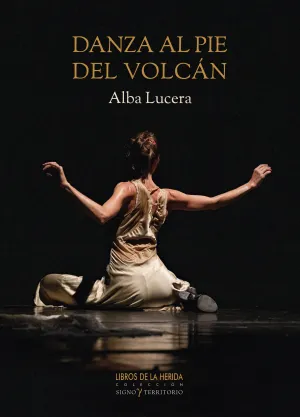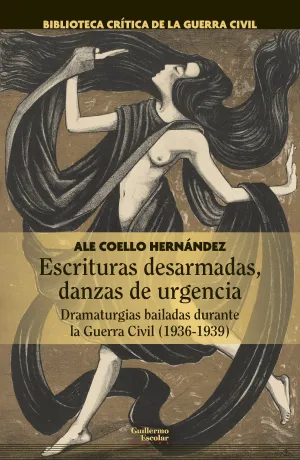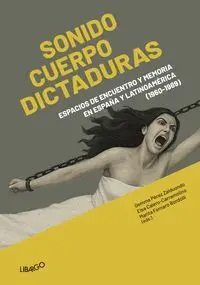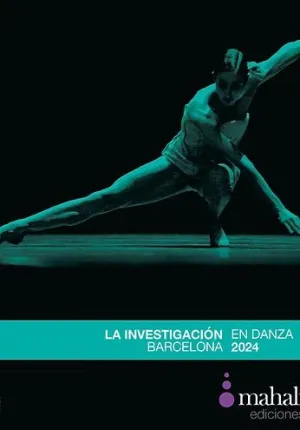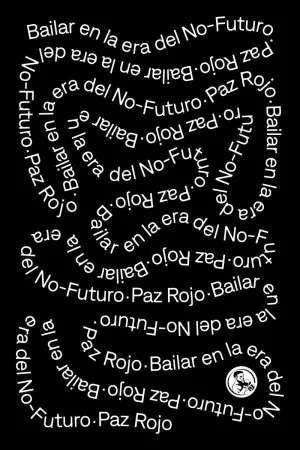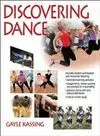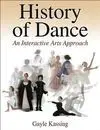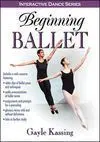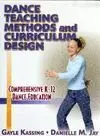
- Editorial:
- HUMAN KINETICS
- Materia:
- DANZA, BALLET, BAILE
- ISBN:
- 978-0-7360-0240-0
- Páginas:
- 432
DANCE TEACHING METHODS AND CURRICULUM DESIGN
GAYLE KASSING / JAY DANIELLE
• Explains, with sample unit plans, how to teach the basics of 10 popular dance forms for K–12 settings
• Explains how to apply educational theories to dance
• Presents dance education in context of the national standards for dance
• Helps readers build portfolios that demonstrate their ability to create lesson plans, a unit plan, and a dance curriculum
There’s a lot more to dance education than steps and dances. To be successful, dance educators must practice a variety of skills that go far beyond dancing. They must incorporate educational theories to meet state and national arts standards, establish a solid knowledge base of the dance form to be taught, and set up developmentally appropriate learning experiences.
To help aspiring dance educators acquire the skills that will make them successful in the classroom, this book provides vital information on teaching methods in general, then shares specific applications for teaching each dance form.
Dance Teaching Methods and Curriculum Design presents a conceptual model of dance education that embraces dance as an art form and disseminates it through learning experiences in dancing, dance making, and dance appreciation. Through this book, dance educators will broaden their understanding of the dance content that is appropriate for their students and their educational setting.
Part I presents an overview of the teaching and learning process in dance, including the background information necessary to plan, organize, set up, and deliver an effective learning experience. It provides essential information about the national standards in dance and guides readers smoothly through the process of
• identifying both dance content knowledge and teacher knowledge,
• developing observation skills,
• being aware of how students learn movement,
• constructing a dance class,
• choosing a presentational method,
• addressing student behaviors in the classroom,
• analyzing the learning environment, and
• teaching for artistic development across various dance forms.
Part II offers ideas for unit and curriculum development, design, and evaluation. Readers will learn how to create learning experiences, lesson plans, unit plans, and finally a dance curriculum. They will become familiar with four categories of dance that encompass 10 dance forms; they also will discover the application of movement, choreographic, and aesthetic principles to these dance forms. Readers will find step-by-step instructions for teaching beginning dance units in 10 different dance forms to offer a curriculum of experiences for students in preschool to college settings.
This book contains many special features so that readers can access important information quickly:
• Chapter objectives and summaries
• Tables that compile information about different topics
• Highlight boxes that draw attention to important information
• Self-check lists that provide a quick way to understand a process or learn a new concept
• It’s Your Turn activities that provide practical, interactive experiences in dance
• 33 forms, including lesson plans, teaching evaluations, unit plans, block time plans (with detailed information about what to teach in each class), and scope and sequence forms that show the order in which to teach various dances and techniques
• Ready-made rubrics that match the objectives for each of the sample unit plans for evaluation
• Sample unit plans for 10 different dance forms, each containing a three-week unit of 15 progressive classes
• An extensive list of book, music, and video resources for each dance unit
• More than 120 photos and 66 illustrations that illustrate the various dance forms and techniques
• Icons for movement, choreographic, and aesthetic principles as they apply to each dance form
• Beyond Technique exercises that provide additional learning activities in dance making and dance appreciation for each sample unit
• A culminating portfolio project that synthesizes all of the elements explored in the book into a practical product that prospective dance educators can present to potential employers
Even the most experienced dance educators will appreciate the sample units for 10 different dance forms, divided into four categories:
• Creative movement and creative dance
• Recreational dance (including social dance, contra dance, folk dance, and square dance)
• Concert dance (including ballet, modern dance, jazz, and tap)
• Aerobic dance (dance fitness)
Dance Teaching Methods and Curriculum Design provides a sound foundation in the art and science of dance pedagogy–for those who seek a rewarding career in teaching dance.
About the Author
Gayle Kassing and Danielle M. Jay have taught dance technique and pedagogy, dance methods, and curriculum design in dance teacher education preparation programs in both physical education and fine arts departments for more than 25 years. Many of their former students are now professionals in K–12 dance education programs.
Drs. Kassing and Jay have helped write state curriculum guidelines and dance teacher certification tests and have presented nationally on teaching methodologies. The two have coauthored one previous book, Teaching Beginning Ballet Technique. Dr. Kassing—a former publications director for the National Dance Association (NDA)—is the media author of Interactive Beginning Ballet Technique, an interactive multimedia CD-ROM for students. Both have received Outstanding Young Women of America awards from the Outstanding Young Women of America Program. Both authors hold PhDs in dance and related arts and belong to the NDA and National Dance Education Organization. Dr. Jay has served on the committee that selects the NDA Dance Educator of the Year award.
Dr. Kassing lives in Champaign, Illinois, where she is an acquisitions editor in Human Kinetics’ division of Health, Physical Education, Recreation and Dance. As a professional dancer, she performed ballet, modern dance, and musical theatre. Dr. Kassing has taught dance in university physical education and fine arts departments and elementary public magnet schools. She administered university dance and fine arts programs and was a Florida Artist in Residence for two terms. She has conducted dance workshops in public schools for state departments of education, in graduate programs, and for professional organizations. In her free time, Kassing enjoys spending time with her family and close friends, walking, reading, and traveling.
Dr. Jay is a professor of dance education at Northern Illinois University. A student of ballet since the age of three, she has studied with Margaret Craske and Celene Keller at Jacob’s Pillow; with David McLain, David Blackburn, and Oleg Sabline at the University of Cincinnati; and with Grace Thomas, a soloist with the Radio City Ballet. Dr. Jay lives in Sycamore, Illinois; her favorite leisure-time activities include spending time with her relatives and close friends, reading, and choreographing.
Table of Contents
Preface
Acknowledgments
Part I: Dance Pedagogy: What You Need to Know About Teaching and Learning Dance
Chapter 1. Envisioning Dance Education
Defining Dance and Dance Education
Distinguishing Between Dancers and Dance Educators
Relating National Standards for Dance to Dance Education
Understanding the Teaching and Learning Process Model in Dance
Summary
References
It’s Your Turn
Chapter 2. Teaching Dance and Cross-Disciplinary Knowledge
Identifying the Seven Cross-Disciplinary Categories of Dance Knowledge
Dance Content for the Teacher
Supportive Knowledge and Other Knowledge
Physiological Training and Conditioning
Technique and Choreography
Applying Education Theories in the Dance Class
Summary
References
It’s Your Turn
Chapter 3. Observing and Analyzing the Teaching and Learning Situation
Understanding Observation Techniques in the Dance Class
Developing Observation Skills
Summary
References
It’s Your Turn
Chapter 4. Guiding Students in Learning Dance
Understanding How Students Learn Movement
Constructing the Dance Class
Summary
References
It’s Your Turn
Chapter 5. Understanding Dance Teaching Methods
Choosing a Presentational Method
Teaching Strategies in the Dance Classroom
Teaching Methods for Specific Dance Forms
Understanding Music and Accompaniment in the Dance Class
Summary
References
It’s Your Turn
Chapter 6. Organizing and Managing the Dance Class
Creating a Positive Learning Atmosphere
Managing the Dance Classroom
Dealing With Student Behaviors in the Dance Classroom
Developing a Philosophy of Teaching Dance
Summary
References
It’s Your Turn
Chapter 7. Analyzing the Learner and the Learning Environment
Understanding The Learner
Developing Psychosocial Behaviors in the Dance Class
Understanding Dance and the Dance Teacher in Public Education
Characterizing the Community
Identifying Values in the Community
Summary
References
It’s Your Turn
Chapter 8. Categorizing Dance Forms and Their Artistic Demands
Gathering Content Information to Teach Dance
Identifying Characteristics of Dance Forms
Understanding the Format of the Dance Class
Dance and Other Disciplines
Utilizing Principles of the Dance Form
Teaching Artistic Development
Summary
References
It’s Your Turn
Part II: Implementing Dance Pedagogy: What You Need to Do to Create a Dance Curriculum
Chapter 9. Developing the Lesson Plan
Setting Up Effective Dance Learning Experiences
Describing the Lesson Plan
Relating Objectives to a Learning Taxonomy
Summary
References
It’s Your Turn
Chapter 10. Selecting the Appropriate Assessment Tools for Dance
Using Assessment Techniques in Dance Class
Grading Students’ Work
Summary
References
It’s Your Turn
Chapter 11. Writing and Delivering the Lesson Plan
Writing the Lesson Plan
Teaching the Lesson
Exploring Other Options
Summary
It’s Your Turn
Chapter 12. Creating a Curriculum
Designing the Dance Program Curriculum
Surveying Four Options for Dance Curriculum Models
Developing the Components of a Dance Curriculum
Writing a Dance Curriculum
Developing and Evaluating Dance Curriculum and Programs
Summary
References
It’s Your Turn
Chapter 13. Sample Units for Dance Forms
Overview of Dance Forms
Teaching Overview
Content Overview
Creative Movement and Creative Dance Unit
Teaching Overview
Content Overview
References
Selected Resources
Folk Dance Unit
Teaching Overview
Content Overview
References
Selected Resources
Square Dance Unit
Teaching Overview
Content Overview
References
Selected Resources
Contra Dance Unit
Teaching Overview
Content Overview
References
Selected Resources
Social Dance Unit
Teaching Overview
Content Overview
References
Selected Resources
Ballet Dance Unit
Teaching Overview
Content Overview
References
Selected Resources
Modern Dance Unit
Teaching Overview
Content Overview
References
Selected Resources
Jazz Dance Unit
Teaching Overview
Content Overview
Selected Resources
Tap Dance Unit
Teaching Overview
Content Overview
Selected Resources
Aerobic Dance Unit
Teaching Overview
Content Overview
Selected Resources
Chapter 14. Culminating Curriculum Portfolio
Depicting the Teaching Environment
Describing the Learner
Selecting Dance Content for Each Unit Plan
Devising Learning Experiences for the Dance Form
Writing the Lesson Plans
Epilogue
Appendix
Index
About the Authors
Audiences
Textbook for dance methods courses. Reference for K-12 dance educators and physical educators, dance specialists, drama teachers, and music teachers.
Supplementary Instructional Materials
Instructor Guide for Dance Teaching Methods & Curriculum Design
The instructor guide for Dance Teaching Methods and Curriculum Design includes chapter summaries, ideas for assignments, activities, and class projects, and transparency masters, as well as instructions on how to use the materials. The instructor guide is available in a Windows and Mac compatible CD-ROM or as an internet download.

